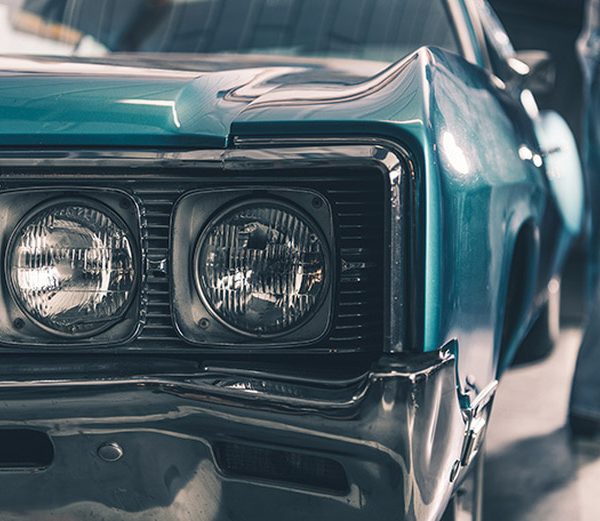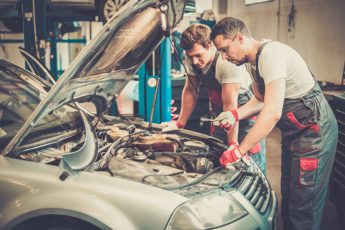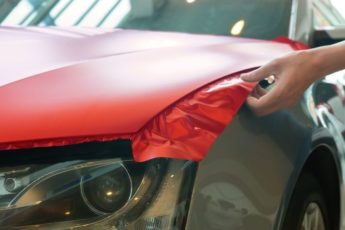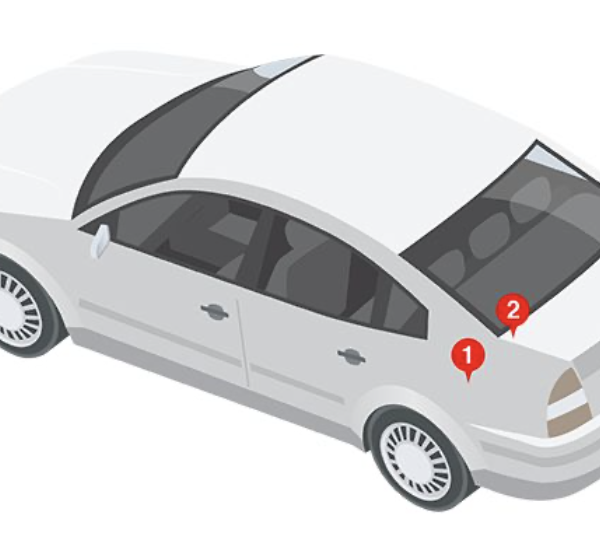Things to Consider Before Rebuilding a Classic Car

Are you contemplating the idea of embarking on a big project, something you can really sink your teeth into? Your spouse might give you a huge eye-roll and your kids can only groan, but you really want to do something that marries your love of vintage automobiles to your love of tinkering. What could be better than rebuilding a classic car? Before you dive in head-first, though, evaluate how the following considerations might affect your ultimate success.
Time
The average classic car rebuild takes around a thousand hours. That’s about 42 24-hour days. Obviously, you are not running a nonstop marathon and can space this out over months or even years, but be aware that you are making a major time commitment. Trying to rush it will lead to a poor job that you will not be proud of, and stretching it out for too long might dampen your enthusiasm. For that reason, you should get at least grudging support from your family members before you begin.
Money
Another thing to keep in mind is that classic car restoration is not a poor man’s hobby. Expect to shell out at least $20,000 for the car, the tools you will need and the materials involved. Of course, this figure could climb much higher depending on the type of automobile you want to fix up. If you do not have all of the funds on hand, it is always better to accumulate them by budgeting before you start making project-related purchases. It is also a better way to stay on the good side of your eye-rolling spouse.
Type Of Restoration
There are four different levels of restoration that you can achieve. Each requires that you do more work and spend more money than the last. They include the following:
- Driver restoration. After you correct minor cosmetic issues and any other small problems, the goal is to get the vehicle on the road so that you can drive it.
- Street show restoration. In this type, you are not just getting the car on the road; you are fully restoring the vehicle, including all minor and major aesthetic concerns.
- Show car restoration. This is a big step up and will probably require the help of a professional. Most vehicles that have been restored to this degree are driven seldom if ever.
- Concourse. Don’t even attempt this level unless you are a professional. It is designed for cars bound for private collections that are never actually driven.
As you can see, restoring can be anything from a weekend hobby to a lucrative occupation done by someone with highly attuned skills. If you are a beginner or a novice, we suggest that you stick to the two bottom tiers of classic car refurbishment.
Find Your Perfect Car
Looking for the automobile you will be refurbishing is very much like finding the perfect romantic partner. Think about it: You will be opening your wallet on behalf of this vehicle, dedicating your free time to it and meditating about the next time you can be together. You will sometimes be frustrated, sometimes inspired and there will be moments when you want to simply turn your back and walk away. For all of these reasons, you need a car that you can afford as well as one that you are passionate about.
Local classified ads and even sites such as eBay can provide a wide selection of options. Whatever you choose, be sure you see it in person before buying. Ideally, take a professional mechanic along with you to provide you with an expert’s opinion of the vehicle. In general, it is best to pick a classic car that is not totally rusted out and has no structural damage since these factors can markedly increase your financial outlay. Especially if you are a beginner, avoiding virtually building from the ground up can help to ensure your ultimate success.
Another consideration is parts. At this point, you need to decide if you are committed to using original antique parts in order to restore the vehicle as close to its original condition as possible or if you are fine with standard ones that, while not authentic in the purist sense, are certainly viable. Someone with the ultimate goal of selling their restored car for top dollar should probably make sure that authentic parts are available either locally or online at a price they are willing to pay. On the other hand, if what you really want is a cool classic car that you can drive and enjoy, getting it up and running with standard parts might be just fine with you.
Space And Equipment
Giving a classic car a total makeover is not cheap, and it also does not take place in a tiny area. If you don’t have a roomy work area in your own garage or shed, think about renting space elsewhere unless you have a very good friend willing to let you occupy part of theirs. Car restoration is not a task that can take place in your driveway or under an awning. Without a doubt, you need an indoor space such as a garage. It should have power sources so that you can plug in lighting and tools. Ideally, it should have an air compressor already installed.
In addition to physical room to do the job, you will also need tools and equipment. Although you may find that you require additional items, you should start out with these at a bare minimum:
- Wrench and sockets
- Screwdrivers and pliers
- Drill and drill bits
- Sheet metal scissors
- Wire brushes
- Electrical tools (compressor, voltage meter, etc.)
- Floor jack
There are several other costly pieces of equipment that you only need for specific jobs. Some require skills that you may not have. You can either take a class in preparation or hire an expert. The tools you will probably need to rent include:
- Blowtorch
- Grinder
- Jack stands
- Engine stand and engine crane
- Welder
If you find after reading this list that you have no idea how to use one or more of these items, do not get discouraged. There is no shame in getting a little professional help along the way.
Body And Paintwork Repairs
Once you have gone through the process of assessing and gathering your resources and choosing the car you want to fix up, it’s time to get to work. Regardless of what type of classic ride you’re dealing with, the chances are excellent that it will need some serious work on its body and paint job. After all, scratches, dings, rust spots and faded paint are some of the first things that people will notice, so they deserve your attention.,
If you want to go all out, look into taking a class in welding and metalworking that will teach you how to make your own body panels from sheet metal. If you would rather not go that route, devote some time to watching videos that show in detail how to hammer out dents and sand and polish scratches. Your computer or smartphone can actually become one of your most indispensable tools as you go on your classic car restoration journey.
The paint job is another area you simply cannot ignore. If you find that there are small areas that have flaked or faded, one of your easiest options is automotive touch up paint. Leading manufacturers offer color matching technology that enables you to simply input the make, model and year of your car into their website. All that remains is to input the color code that matches the hue of your vehicle, and you’re on your way to a perfect touch up paint experience. Of course, your job will be significantly more difficult if a large portion of the car’s surface is dingy or damaged. In that case, you will need to either do a total repaint yourself or pay an auto body shop to do the job for you.
Safety Upgrades
If you plan to drive your car at all once it is restored, take some time to update the safety equipment. Great strides have been made in protecting drivers and their passengers, and many things can be installed without compromising the integrity of your restoration. These include seat belts and air bags in particular. Furthermore, take time to be sure that your car’s brakes are in excellent working order. One red flag to indicate that they are not is if you note that one brake pedal is lower than the other. Never compromise on this all-important component of driver and passenger safety. Should you be making your car over into something you plan to drive frequently, you might also consider installing features such as a rearview camera and parking sensors. Upgrading your sound system, air conditioning and upholstery are other ways to add to your comfort and that of your passengers as long as you are not dead set on a show car or concourse restoration.,
Moving Parts
Unless someone has been driving the vintage vehicle you have been working on, many of its components are probably nonfunctional at this point. Decay and corrosion take their toll on moving parts that have been stationary for a long period of time. What’s more, brake and transmission fluids that are not changed at least once every two years can mean that the systems they support are also at a stand still. In other words, your car might look great on the outside, but you are probably going to have to replace most if not all of its internal components.
Electrical Components
The same is true for anything powered by electricity in the vehicle. Over time, wires fray and degrade, and internal cables can often be chewed on by mice if the car has been exposed to the elements. For these reasons, you need to carefully check to be sure that all electrical equipment is safe, replacing what is not. Furthermore, an automobile battery that is left to lie dormant for more than three months without being used or charged may be beyond rescue. Fortunately, batteries do not cost a lot to replace.
Regardless of your level of skill or your financial wherewithal, one fact is true of virtually all men and women who take on a classic car restoration project: They do it as a labor of love. Just as in any relationship with a human being, you will have high and low points, setbacks and victories. As long as you have laid the groundwork and prepared well by gaining knowledge, having the proper equipment and the monetary resources, you can overcome most of the bumps in the road that you encounter. If you get stuck, reach out for help from knowledgeable friends as well as from reputable websites. If you get to the point of throwing up your hands in frustration, walk away. Tomorrow or the next day, look at the problem with a new and less emotional perspective, and the solution might just come to you in a flash.
Finally, the most important advice we can provide is this: Have fun. Taking on a classic car restoration project can give you hours of challenge and enjoyment when you learn new skills, hone old ones and stretch beyond what you thought possible. Best of all, you will be rewarded at the finish with a shiny, tangible and perhaps even valuable prize that you can drive or, at the very least, show off to all your friends.

 Cart
Cart
 Help Desk
Help Desk






